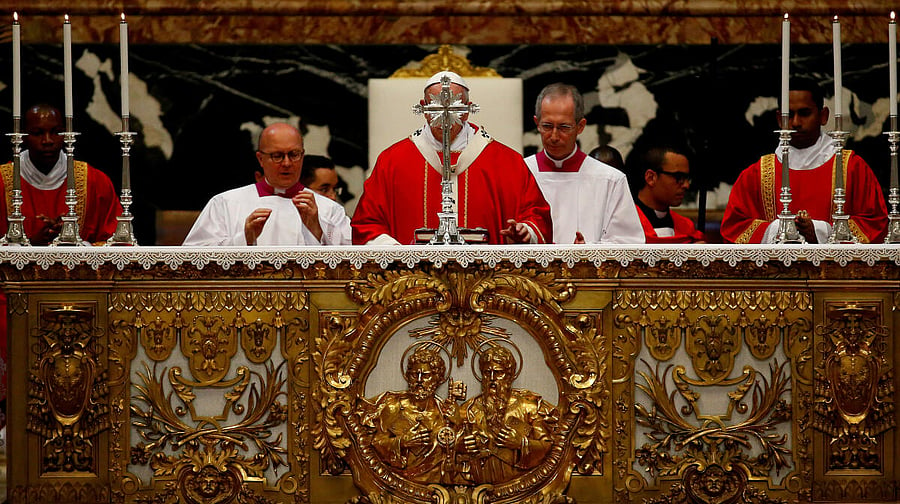
A file picture of Pope Francis leading a Mass at St Peter's Basilica in the Vatican.
Credit: Reuters Photo
The governance of the Catholic Church passes to the College of Cardinals upon a pope’s death or resignation, mentions a report by the United States Conference of Catholic Bishops.
The bishops, officials of the Vatican from around the world, chosen by the pope and recognised by their red vestments are referred to as the cardinals.
The cardinals conduct general congregations at the Vatican, which is a series of meetings following a vacancy in the papacy, wherein the needs, shortcomings as well as challenges faced by the Catholic Church globally are discussed.
Arrangements for an upcoming papal election, called a conclave are also done by them. The funeral and burial of the deceased pope were also done by them in the past, the report added.
The decisions that a pope makes such as appointing a bishop, convening the Synod of Bishops, need to be on hold till the elections are held.
In the past, the cardinals gathered in St Peter's Basilica for a Mass invoking the guidance of the Holy Spirit in electing a new pope. This was done 15 to 20 days after a papal vacancy, the report further added.
The cardinals below 80 years of age are eligible to vote in a conclave. These are referred to as the cardinal electors.
For the conclave itself, the cardinal electors proceed to the Sistine Chapel and take an oath of absolute secrecy before sealing the doors, the report mentions.
Voting is conducted by secret ballot process, where in one by one, the cardinals proceed up to Michelangelo's fresco of the 'Last Judgment', say a prayer and drop the twice-folded ballot in a large chalice.
The voting is done in four rounds until a candidate receives two-thirds of the vote. While counting of the votes, each of the ballot results are counted aloud and the votes are recorded by three cardinals who are designated as recorders.
In case no one receives the required two-thirds of the vote, the ballots are burned near the chapel in a stove with chemicals producing black smoke.
When a cardinal receives the two-thirds vote mandate, he is asked whether he accepts his election by the dean of the College of Cardinals.
If the cardinals accept the election, he then chooses a papal name, dressed in papal vestments before proceeding out to the balcony of St Peter's Basilica.
The final round ballots are then burned with a chemical, producing white smoke signalling the world that a new pope has been elected.
Finally, the senior cardinal deacon, currently French Cardinal Dominique Mamberti, Prefect of the Supreme Tribunal of the Apostolic Signatura, announces the "Habemus Papam" ("We have a Pope") from the balcony of St Peter's Basilica, before the new pope steps out to impart his blessings.
